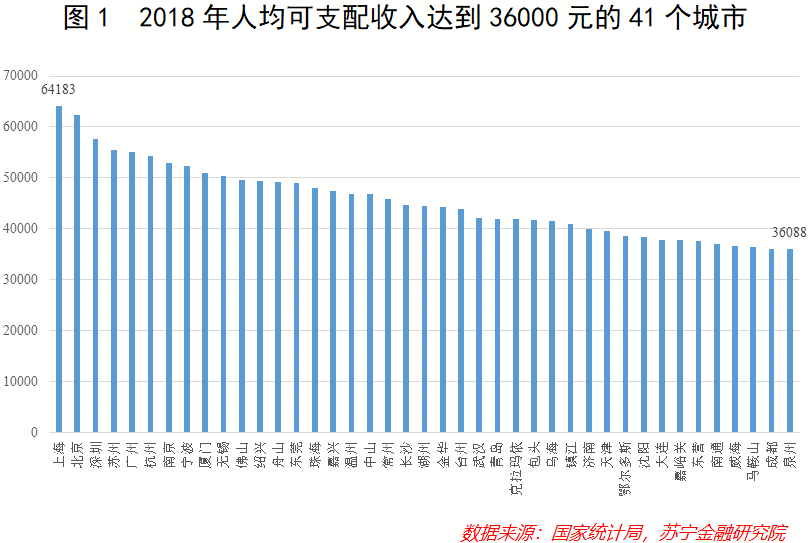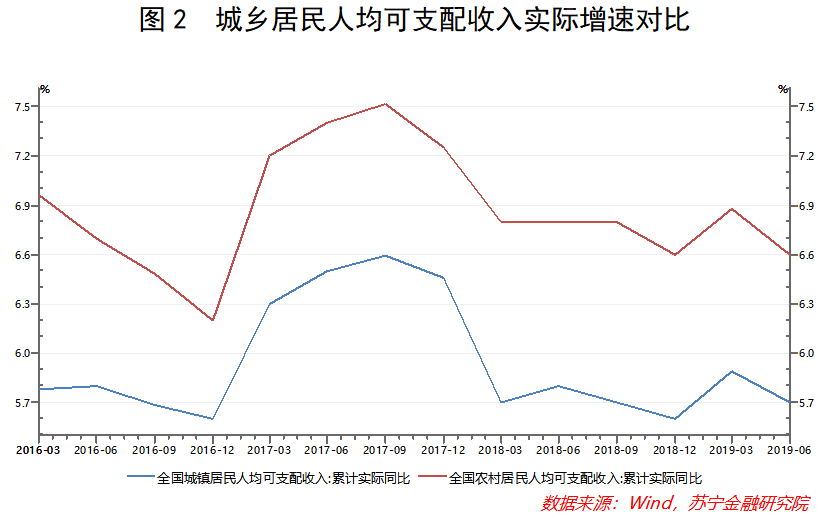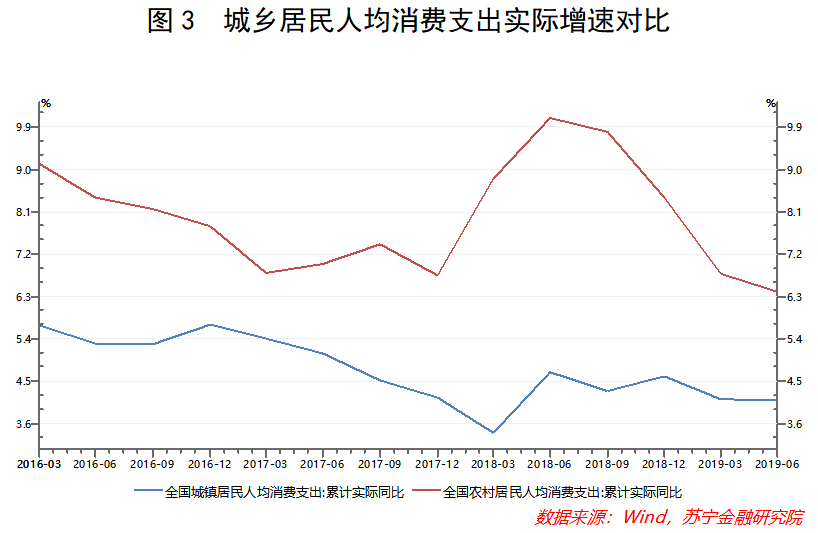To say the most popular words nowadays, the “sinking market” must be one of them.
Editor’s note: This article is from WeChat public account “Suning Fortune Information” (ID: SuningWealthInsights), author Fu Yifu, editor Chen Xia Yang Na.
To say the hottest words nowadays, “sinking the market” must be one of them.
In recent years, Internet companies represented by fast-handed, multi-tasking and interesting headlines have continuously interpreted the infinite prospects of the sinking market with high-speed growth.
Especially in 2018, the three-year-old fight and the two-year-old fun headpieces have reached a feat of listing in the United States, and it is like a milestone. It has completely opened up this long-lost neglect. Heaven and earth, let those who are obsessed with deep-growing developed cities appreciate the charm and value of the sinking market.
With the growing saturation of first- and second-tier cities and the gradual reduction of online traffic dividends, today’s sinking market has become a must for business battlefields, in addition to e-commerce and content, games, finance, Social, technology, services… almost everything that people can think of is in the “sinking” process.
There must be a cause for it, and the explosion of the sinking market will not be accidental. Therefore, it is necessary for us to see its face, to understand the people there, to rationalize the logic of the rise, and to explore potential opportunities.
One,Contour outline
How to define the sinking market, there is currently no clear answer given by the authorities. However, the industry generally believes that the sinking market refers to markets below the third-tier cities, counties, and rural areas. Based on this description, we can dig up a lot of valuable information.
First, the sinking market is vast and has a large population.
Everyone knows that our country has 9.6 million square kilometers of land, but few people know exactly how many cities, counties, and villages there are.
According to the statistics of the Ministry of Civil Affairs, as of the end of 2017, there were 290 prefecture-level cities, 2,862 county-level cities, 41,636 townships, and 691,510 villages nationwide.
Among these zonings, there are 4 first-tier cities (Northern Guangzhou-Shenzhen), 15 “new first-line” cities (Chengdu, Hangzhou, Nanjing, etc.) and 30 second-tier cities (Wuxi, Foshan, Hefei, Dalian, etc.) ), there are 49 first-line, “new first-line” and second-tier cities, all of which belong to the sinking market.
Interestingly, the administrative area of these 49 developed citiesAfter the summation, it can be found that the result is only 5.36% of the total area of the country – that is, nearly 95% of China’s land area is covered by the sinking market.
So, how many people live on this vast land?
According to the research report of Guotai Junan Securities, except for 390 million people in first- and second-tier cities, the population of cities, counties, towns and villages below the third-tier is nearly 1 billion–a figure that is three times the population of the United States.
This also explains why many people think that the name “sinking market” is not to be seen: when people say “sinking”, they have already revealed that his perspective is overlooked; since it is overlooking Inevitably, with a hint of arrogance and even prejudice, it is like when a frog is sitting in a well, it is precisely the time when he thinks that his vision is broad. As everyone knows, if you are in the so-called sinking market to “go up”, you will find that Beishangguangshen is a small part of the “alternative” in the land of China, and represents the sinking market of most of the land and people. It is the most authentic portrayal of the big country. Perhaps it is more appropriate to call it the “mass market”.
Second, there is a lack of quality supply and the demand for residents is far from being met.
With the rapid development of the national economy and the continuous improvement of the income level of residents, most people have solved their food and clothing and headed for a well-off society. The rise of e-commerce and the maturity of logistics have even smoothed the boundaries of the region. Let people buy the products they want, when and where they want. However, compared with the first- and second-tier cities, the supply of high-quality goods and services in the sinking market still has a big gap, which is particularly evident in the online retail format.
I believe that many people have such experience. When they arrive in a small county or township, the large-scale commercial supermarkets that can be seen are significantly less than those in the first- and second-tier cities, and the new retail formats such as Boxan Fresh, Su Xiansheng and Super Species are almost impossible to see. As for other places of consumption such as bars, there are also very few.
Not only that, if you go to the countryside, people often find that there are few decent supermarkets in the whole street. Instead, the old-fashioned couples and grocery stores dominate the mainstream. The typical case is the well-known hit drama “Country Love”, a “big foot supermarket” plays the role of the entire village shopping hub of the Ivory Mountain Village. At the same time, the rare “miscellaneous goods” in first- and second-tier cities are commonplace in rural areas, and the villagers are not surprised at this. Whether it is genuine or not, it can be used anyway.
I believe that such a story is not a case in the country – after all, there are only a handful of villages as wealthy as Huaxi Village. This also reflects the fact that the consumer demand of the sinking market residents is far from being met.
Third, the development potential is huge.
Data can support this assertion. Statistics from Analysys show that the current 1 billion sinking market residents own 500 million mobile devices, that is, the average person has 0.5 mobile devices; by comparison, the per capita equipment in first- and second-tier cities has reached 1.3. In addition, China Internet Network Information Center data show that as of June 2018, the number of rural netizens in the sinking market was only 211 million, and the population penetration rate was 36.59%. In contrast, the penetration rate of urban netizens has reached 72.65%.
It is not difficult to find that the sinking crowd has just “touched the net” soon, and behind them, it is the last piece of traffic in the era of mobile Internet. The potential is huge enough to make people think.
The above three points outline the outline of the sinking market.
Second,Crowd Portrait
People are not only the creators of wealth, but also the starting point for all business values. In this new era in which user thinking dominates, in order to truly understand the essence of the sinking market, it is necessary to understand the characteristics of the sinking crowd.
The difference between the development stage and the living environment makes the sinking people subtle, forming the following three unique attributes:
One is the social property of acquaintances.
The concept of “acquaintance society” is the sociological master Fei Xiaotong used to describe the rural social order in “Local China”. Popularly speaking, acquaintance society is a kind of “small circle” society. It is a complex and huge network of relationships based on the relationship between relatives and friends and neighbors. Because people are familiar with each other, they can help each other and take care of each other.
If you come to the county town, township or rural area, people will surely feel that you are coming and going between the relatives, and the happiness in the left and right is full of harmonious and warm “human feelings.” However, in first- and second-tier cities, this atmosphere is inferior, especially in first-tier cities such as Beishangguangshen and Shenzhen. Many residents do not even know who they live in, even if they often take photos, it is very difficult to chill. This suggests on another level that social means are promising in sinking markets.
The second is a price sensitive attribute.
Because of the gradual development of China’s cities, the economic development of first- and second-tier cities is faster than that of third- and fourth-tier cities. Therefore, the income of residents in the first, second and fourth-tier cities is generally declining. For the sinkers, although their income levels have improved significantly, they are still not high.
The National Bureau of Statistics data shows that in 2018, there are only 41 cities in China with a per capita disposable income of more than 3,000 yuan per year (that is, the per capita disposable income exceeds 36,000 yuan per year) (see Figure 1). Most of the sinking people can spend only one or two thousand or even a few hundred yuan per month. This is why there are still “one billion people who have not been in the plane and 500 million people who have not used the toilet”. Coupled with the relative lag of infrastructure construction, sinking peopleThe consumption options are relatively small, so they are generally very sensitive to price changes in commodities. Even small price fluctuations, whether expensive or cheap, may influence their consumption decisions.
The third is leisure entertainment.
People who are used to the busy work and fast-paced life of big cities will definitely feel comfortable if they come to the sinking market, because the leisure time here is obviously much more. According to the “China Workplace Balance Index Research Report” jointly launched by Peking University’s Social Research and Research Center and Zhilian, 31~40 hours is the highest length of work time per week (35%) of urban residents below the third line, lower than the first line. Cities (56%) and second-tier cities (47%); in the interval of working hours greater than 41 hours, cities below the third line are also lower than first- and second-tier cities; on the contrary, the working hours of urban residents below the third-line are 21~30 hours, high In the first and second tier cities.
Therefore, the sinking crowds have a lot of time to go to leisure and entertainment in their spare time. They don’t think that it’s a waste of time to launch friends and family to shop. At the same time, subject to limited offline entertainment infrastructure, the sinking crowd will go online to find relevant content of various light entertainment information, from gossip news, health care to parents short or square dance, all received.
Familiar with the above three attributes, we can easily understand why the multi-tasking and fun headlines can cut into the sinking market and open the situation so quickly – whether based on social media, using the trust and intimacy between acquaintances Fission-type dissemination is quick to win customers, or it is mainly for low-priced explosive products and large-scale subsidies for users, or for group shopping and entertainment. The background behind all kinds of games is a deep understanding of the attributes of sinking people.
Three,Consumption upgrade
Some people say that the sinking market is a “low-end consumer market,” which may be influenced by the public opinion of a lot of “counterfeit storms.” However, I do not agree with this view. Although the income of the sinking people is still low, their spending power is not weak.
We may wish to examine the income and expenditure of urban and rural residents. According to the relevant statistics of the National Bureau of Statistics, the actual year-on-year growth rate of per capita disposable income of rural residents has been significantly higher than that of urban residents in recent years. Correspondingly, the actual year-on-year growth rate of per capita consumption expenditure of rural residents is also higher than that of urban residents (see Figure 2. image 3).
In addition, most low-rise cities and regions have lower housing prices. A considerable number of residents do not need to worry about huge mortgages, so they have a strong willingness to spend, dare to spend money, or even lose money to go to the mortgage every month. There are few first- and second-line people. Nielsen’s China Consumer Confidence Index report shows that consumer confidence in first-tier cities is the weakest in 2018, while consumer confidence in third-tier cities and rural residents is stronger (see Figure 4).

In addition, the pace of consumption upgrades for sinking people is also accelerating. Borrowing the expression of the Japanese scholar Miura, most of the low-rise cities and local residents have entered the “second consumer society” and the “third consumer society”, and their distinctive features are the transition from “for household consumption” to “for personal consumption”. In the case of meeting the consumption of household necessities, people began to consciously pursue individualized, branded, high-end, experiential consumption.
Among them, there is also a new consumer power that cannot be underestimated. That is the young people in the town, that is, those who are 18 to 30 years old in the sinking market.
A few years ago, “town youth” was just a derogatory term. People who were labeled with this label often felt that they were not very glorious because it was “rusty,” “no aesthetic,” and “not very high income.” Features such as “lack of taste” are associated. However, different from the past, the new face of consumption presented by the young people in the current town has already greatly overturned people’s impressions. This can be seen from the data:
First, the automotive market continues to improve.
Today, cars are the “standard” for many young people in the town. Roland Berger’s statistics show that the current 90s are gradually becoming the main consumer of the domestic auto market. Among them, the mid-end auto consumer market in the third- and fifth-tier cities is growing most rapidly, and the price is between 80,000 and 180,000 yuan. The growth of the range of car consumption in the cities below the third-line is the most significant.
Second, Haitao is quite popular.
According to the “China Haitao Consumption Report” released by the overseas shopping platform Ocean Terminal, the development of cross-border e-commerce has made the domestic consumer market show a popular trend, while the residents of the third- and fourth-tier cities have issued larger than the first- and second-tier cities. Consumption energy. The most intuitive performance is that in the most cost-conscious cities, the third- and fourth-tier cities occupy almost half of the seats on the list.
The third is that the pan-entertainment consumption has increased significantly.
According to the research report of Everbright Securities, the consumption of small towns in the field of pan-entertainment has been significantly improved. Among them, games, live broadcast, short video, online animation, online reading, online music and other sectors are more prominent, which further confirms The consumption of young people in the town has escalated.
Four,But behind the scenes
In fact, from beginning to end, the sinking market has always been, and it is not a new thing that has only recently. As early as many years ago, the Country Garden of the real estate industry and Wahaha of the catering industry had created their business glory in this vast land. Today, the sinking market has suddenly become red again. What is going on?
In my opinion, there is certainly the impact of a lot of fun and interesting headlines going to the US market, but in-depth consideration, behind the phenomenon-level awakening of the sinking market, at least the following five forces are pushing:
One, the regional economic growth momentum is changing.
From a macro perspective, although the developed eastern regions occupy an important economic position and have long played the role of a leader, in recent years, the development of many places has become more and more saturated, and the economic growth rate has slowed down noticeably. On the contrary, many areas in the less developed regions of the central and western regions have shown a very good growth trend, which makes people shine.
Official data show that GDP growth rates in Beijing, Shanghai, and Guangdong were 6.6%, 6.6%, and 6.8%, respectively, in 2018, while growth rates in Yunnan, Guizhou, Sichuan, and Tibet were as high as 8.9%, 9.1%, and 8%. And 9.1%, fully demonstrating that the driving force for national economic growth is shifting from developed regions to underdeveloped regions, while underdeveloped regions are just the main positions of sinking markets.
Second, the population of some first- and second-tier cities is back.
In recent years, affected by negative factors such as high housing rents, traffic congestion, and discounted air quality, the policies and regulations of relevant departments have been superimposed. Many foreign residents in first- and second-tier cities are decreasing. Many people have called out. The slogan of Beishangguang. Typical, such as Beijing, since 2017, its resident population has been shrinking for two consecutive years (see Figure 5).


